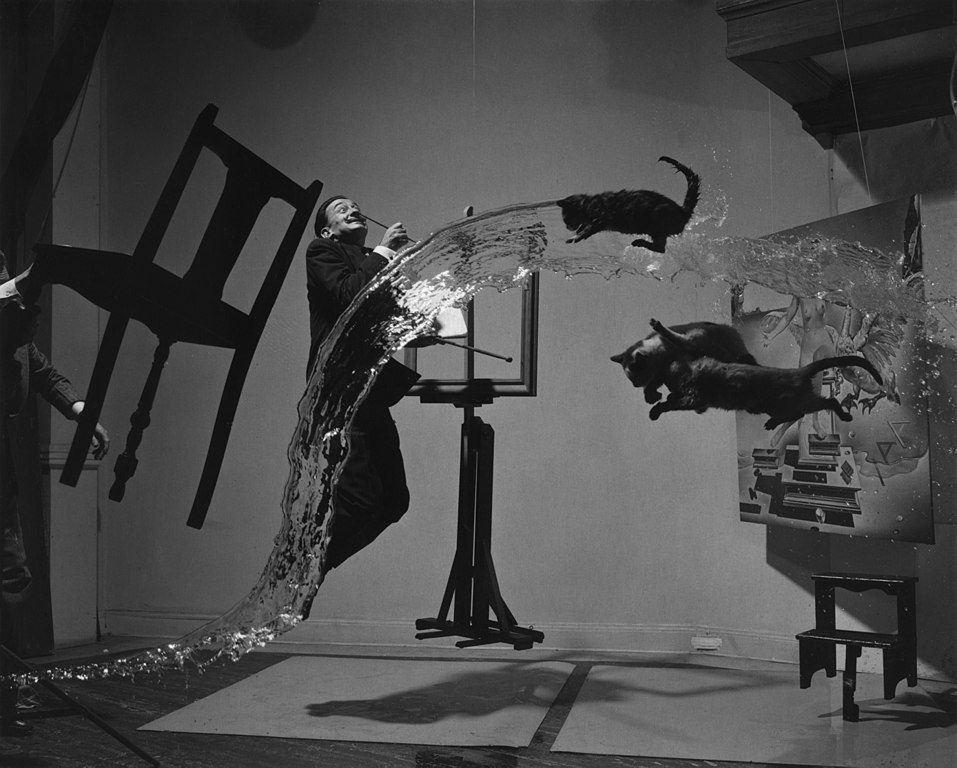Exhuming Dalí

It must be a blow to learn that you’re not the daughter of a famous artist and that your mother was a bit of fibber in the same moment—especially if you’re a psychic and didn’t foresee either. Pilar Abel, a Spanish tarot card reader from Girona, won the right to exhume Salvador Dalí’s body in 2017 to run a DNA test to prove that she was his daughter. Her mother had told her that the artist was her father. Alas, the test showed there was no relation. “After the Madrid court ruled that Dalí was not related to her, Abel filed an appeal calling into question how his remains were handled. On Monday May 18, the Regional Court of Madrid dismissed this appeal, and ruled that Abel was liable for the costs for the exhumation. While no amount was cited, the bill had been previously been estimated to be around €7,000 ($7,678).”
In other news: Woman wins €1m Picasso in raffle. “‘I have never won anything before,’ said the 58-year-old told from Ventimiglia, in north-western Italy.”
Cambridge University will hold all lectures online until the summer of 2021: “The university said, ‘given that it is likely that social distancing will continue to be required, the University has decided there will be no face-to-face lectures during the next academic year.’ Tutors have been told that lectures will be held virtually, including live-streams. However, the institution still plans to hold seminars, workshops and small group-based learning in person with ‘strict social distancing’ in force.”
William Logan reviews Carolyn Forché’s new collection of poetry, In the Lateness of the World: “Despite a taste for the ‘poetic,’ Forché’s poems oddly lack intimacy, no matter the subject—she speaks in the voice of a documentary narrator, approaching scenes in a hazmat suit. A voice issuing from the blank margins of history textbooks is fine if you’re a history textbook; but many of the poems suffer from jellied passivity. A poem in which she details her collection of objets d’art—monk’s scroll, hand-woven rug, one-armed statue of St. Dominic, piled up like the inventory of a curiosity shop—has a chilly detachment and an uplifting ending (‘the souls of others, who glimmer beside us/ for an instant, here by chance and radiant with significance’) that places the poem between a collector’s humble-brags and an outtake from Antiques Roadshow.
In praise of porches: “On a cold and unremarkable November night about 10 years ago, I arrived from India in Knoxville, Tennessee. The first thing I noticed about my new home was its massive front porch. Long and unfussy, it stretched along the entire width of the red-brick Craftsman bungalow. It had an old wooden floor and on one side furniture half-swallowed by shadow. More than anything, I was struck by its deep sense of ease, and how familiar it felt. I’d grown up in a small town in India, in a bungalow with a veranda not unlike this porch. Standing on it that freezing night, I suddenly felt a little less cold.”
Revisiting the Locked Room experiment: “In September 1969, newly arrived first-year sculpture students at Saint Martin’s School of Art in London were handed name badges and a cube of polystyrene wrapped in brown paper, and ushered inside a bolted and padlocked room. Inside, they found their names pasted at distanced intervals on the floor, along with a list of rules. Students were told that they were not allowed to leave the room between 10 a.m. and 4:30 p.m., except to fetch tools, and were silently supervised by at least one professor at all times. Technically, this was an art class. But it was also a pedagogical experiment that later came to be dubbed the Locked Room. It ran for two years and was the brainchild of tutors Garth Evans, Gareth Jones, Peter Kardia and Peter Harvey . . . The project doesn’t have much of a legacy, and has only recently being re-evaluated, thanks to a 2019 exhibition at London’s Laure Genillard gallery and a new collection of interviews and ephemera The Locked Room: Four Years That Shook Art and Education, 1969–73 (published by the MIT Press), both from curator Rozemin Keshvani. But back then, it was meant as a project exploring how people might communicate with each other under controlled settings—and it may well have inspired shifts in art education and art-making.”
Running out of reading? Pick up some Sir Walter Scott: “The reason people don’t read Scott anymore is that they think he’s prolix. They are right. There’s no getting around the fact: he’s a deeply prosy, long-winded writer. If the only thing that will hold your attention is a string of staccato action set-pieces you will surely struggle with him. But the secret to enjoying him is to accept this. Instead of impatiently yearning for things to hurry up, you need to surrender yourself to the prose, to sink into it as into a warm bath. Critics sometimes recommend starting with the shorter, more action-filled novels such as the melodramatic The Bride of Lammermoor (1819), or the crusader romp The Talisman (1825) — uncharacteristic Scott, in other words. This is entirely to miss the point. Settle down instead to longer, steadier books such as The Antiquary (1816), Rob Roy (1817; not in the least like the Liam Neeson movie) or my personal favorite, The Heart of Midlothian (1818), the only novel to have a football team named after it.”
Photo: Nafplion
Poem: Amit Majmudar, “Theory of Incompleteness”
Receive Prufrock in your inbox every weekday morning. Subscribe here.